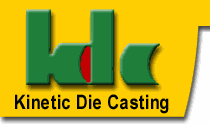|
There are many forms of Die Casting Porosity, many are caused by these die casting variables:
- Metal Temperatures and Mold Temperatures.
- Material Cleanliness.
- Die Casting Mold Design.
- Die Casting Part Design.
- Die Casting Machine Pressures.
- Die Casting Machine Shot Speed.
- Die Casting Spray or Die Casting Mold Release.
- Other forms of porosity can be from ?shrinkage? or wall thickness.
What is Die Casting Porosity? In order for you to know what die casting porosity is, you need to know the die casting basics. The most common form of Die Casting Porosity is a kind of factory defect in which die cast parts contain small pockets of void space and air within the metal, causing it to become porous.
Porosity in Die Casting is the air trapped by the metal inside the die casting parts. To know more, a basic knowledge of the die casting process is necessary. Die casting is a process wherein a particular amount of molten metal is put inside a shot cylinder, then it is applied (plunged) with great force with a piston so as to force the metal into a die cast mold or die cast die. During this ?plunging process?, air inside the cylinder is forced along with the metal into the die casting mold. It is a very fluid turbulent process. The air forced into the mold with the metal and the metal already inside the mold is forced out of the mold through a series of gates, vents and overflows.
After this, the metal is left to cool down and harden or freeze inside the mold. The metal is then removed as a die cast part. The same process is repeated over again.
Die casting companies use metals which are non-ferrous, or do not contain Iron, as this is the highest factor for oxidation and rusting. Several examples of non-ferrous metals include zinc, aluminum, lead, magnesium, tin and copper. Kinetic Die Casting only uses aluminum and zinc.
In the worst case, porosity in die casting parts, weakens die casting parts, if the voids or pockets are very large. Porosity typically matters most in pressure tight die casting parts. When the air escapes through a die casting part, it is typically caused by porosity.
Employees of Kinetic Die Casting are POROSITY EXPERTS in die casting parts that need to be free of porosity.
Contact Kinetic Die Casting Company today if you need ?solid? die casting parts.
Die Casting Processes
Brass Parts Die Casting.
Tooling Die Casting.
Die Casting Draft Angle.
Alloys for Die Casting.
Aluminum Die Casting Company.
Zinc Parts Die Casting.
Magnesium Die Casting Company.
Porosity in Die Castings.
Sand Castings.
Technical Die Casting Terms.
Die Castings Compared to Steel.
Die Castings Compared to Plastic.
Capabilities of Die Casting.
Why use Diecasting.
What is Die Casting.
American Die Casting Company .
Manufacturing Die Castings .
Custom Metal Parts.
Diecast Quality Production.
Die Casting Aluminum.
Diecasting Company.
Kinetic Die Casting Company.
| 
